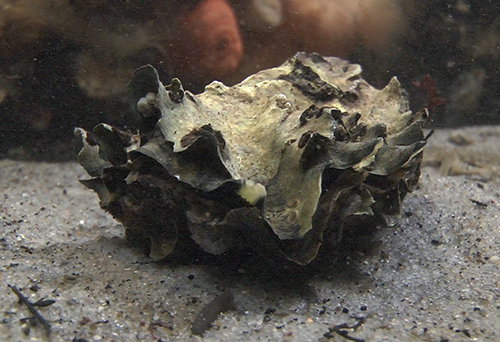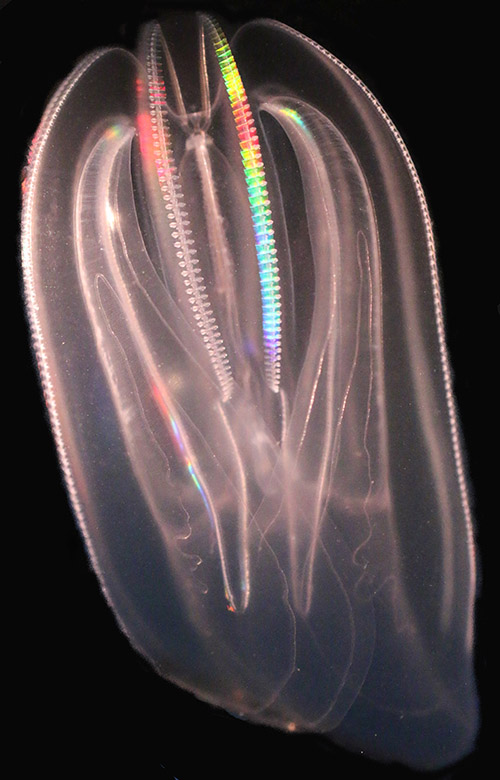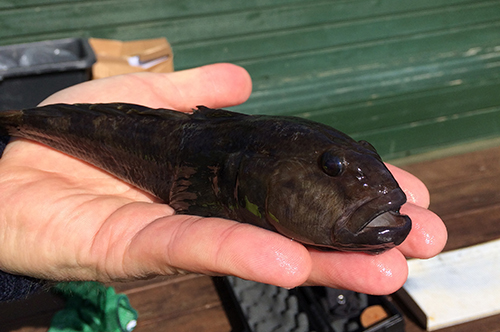Invasive species are spreading with the ballast water from ships, and therefore the ballast water usually has to be cleansed. A DTU Aqua-invented model has, for the first time, shown that the risk of spreading species between the harbors of Øresund does not primarily come from internal sailing, which opens up for dispensation.
Ballast water from ships is the reason for one third of the spread of species in the oceans – so-called invasive species. Because of this, tighter rules have been implemented upon cleansing systems on ships that sail between different nations.
Researchers from DTU Aqua have, in collaboration with consulting firm LITEHAUZ, developed a model for the Danish Environmental Protection Agency (EPA) to estimate whether there is a risk of spreading species from sailing between two areas – or if the two water areas are so alike, that the ballast water will not have a substantial effect on the spread of species on the area in question, known as a Same Risk Area (SRA). If an area is defined as a SRA, dispensation can be bestowed from rules of installing expensive cleansing systems on the ships. These rules are just what the Danish and Swedish governments have agreed upon for the sailing traffic in Øresund.
”We have developed a model that helps both the industry and the environment, both of which have a problem needing a solution. This model will support decision makers to protect, but not expensively over-protect the marine environment form adverse effects from introduction and spread of marine invasive species” says Flemming Thorbjørn Hansen, DTU Aqua.
Invasive species can prove challenging for both the industry and the environment
Sea walnut (Mnemiopsis leidyi), round goby (Neogobius melanostomus) and pacific oyster (Crassostrea gigas) are the names of three invasive species that were seldom used in the Danish language, a few decades ago. Back then, those species were not present in Denmark, as they belong in areas far from our waters, where they lived in an ecosystem which had adapted with food and natural enemies to keep a balance between the species. Today, they have become common in Denmark – and are often competing with the fish and underwater organisms who belong here. These are but a few examples of a long list of invasive species, who bring troubling challenges to many fisheries around the globe. A common trait for these species is that they can spread across enormous distances when they are sucked into a boat with ballast water, which gets emptied into the ocean again, when the ship reaches harbor in an entirely new area across the world.
The world’s first SRA
To reduce the global spread, the International Maritime Organization of the UN (IMO) has established a convention requiring ships that sail from one nation to another, to practically install a cleansing system as a means to protect local waters. IMO, however, has bestowed compensation for ships that travel exclusively within Same Risk Areas. This is where DTU Aqua’s new model enters the picture. It can be downloaded by everyone, and it is now up to the authorities of the respective nations, to decide whether the model can be approved for use of SRA sailing dispensation. By using this model, Øresund has been appointed the world’s first SRA, benefitting the local sea traffic of Øresund, especially the ferries sailing between Denmark and Sweden.
The effect on new areas of the invasive species varies a lot, and can be hard to predict. Here are some examples of species with a substantial effect on the waters.
 |
 |
 |
Pacific oyster
Has spread in the Limfjord and has become a serious threat to the oysters of the fjord. It creates a very sturdy reaf, similar to concrete. It is edible and can be caught, just like the oysters of the Limfjord. Photo: Danish Shelfish Centre, DTU Aqua
|
Sea Walnut
Can appear in dense populations. Filters water from plankton organisms, which some newborn fish, like the herring, needs in order to survive. Photo: Cornelia Jaspers.
|
Round goby
Has spread immensely in the Danish waters. Fights with other homegrown species for food in areas like the certain parts of the inner Danish waters. Is frequently eaten by cod. Photo: Mads Christoffersen
|